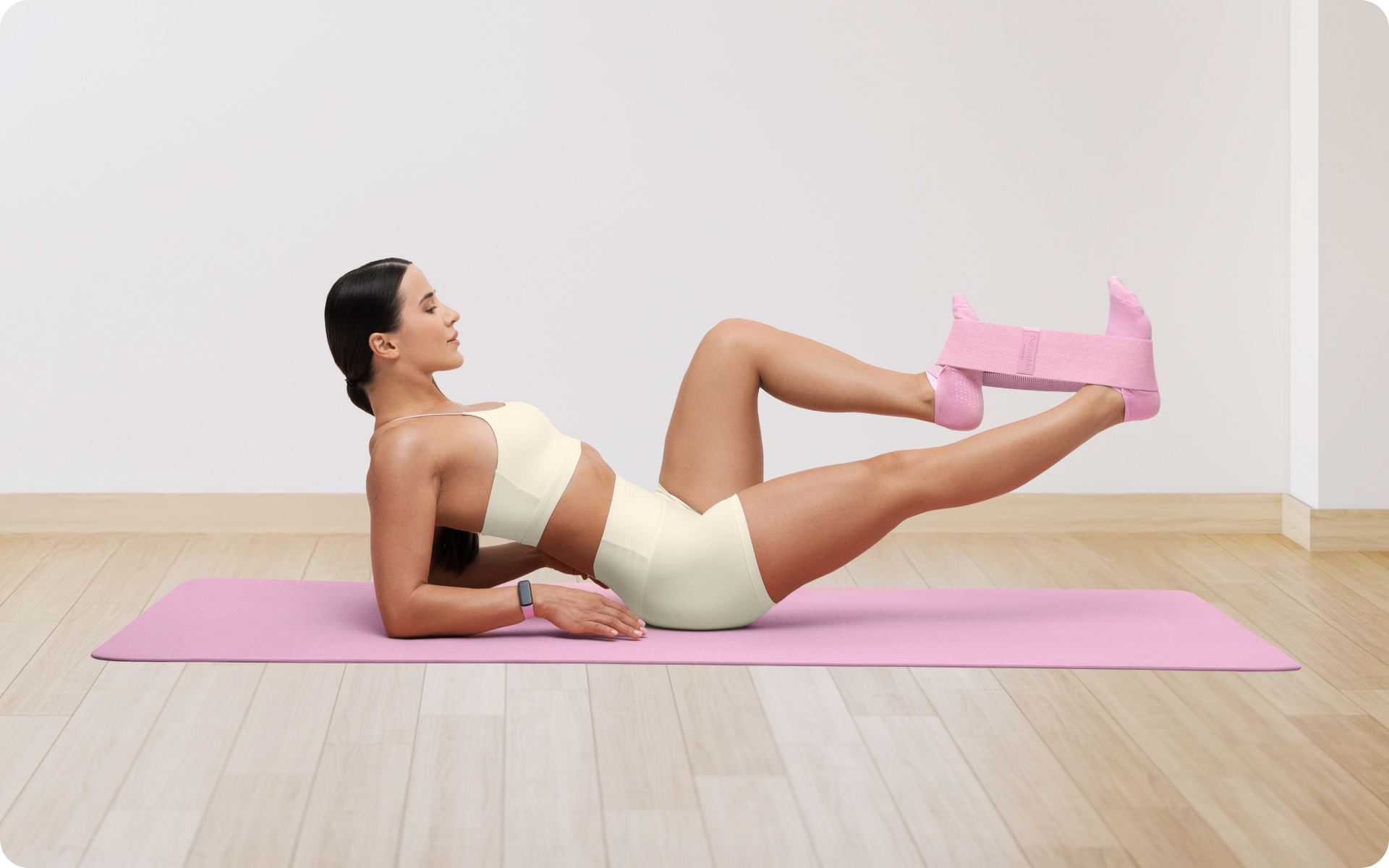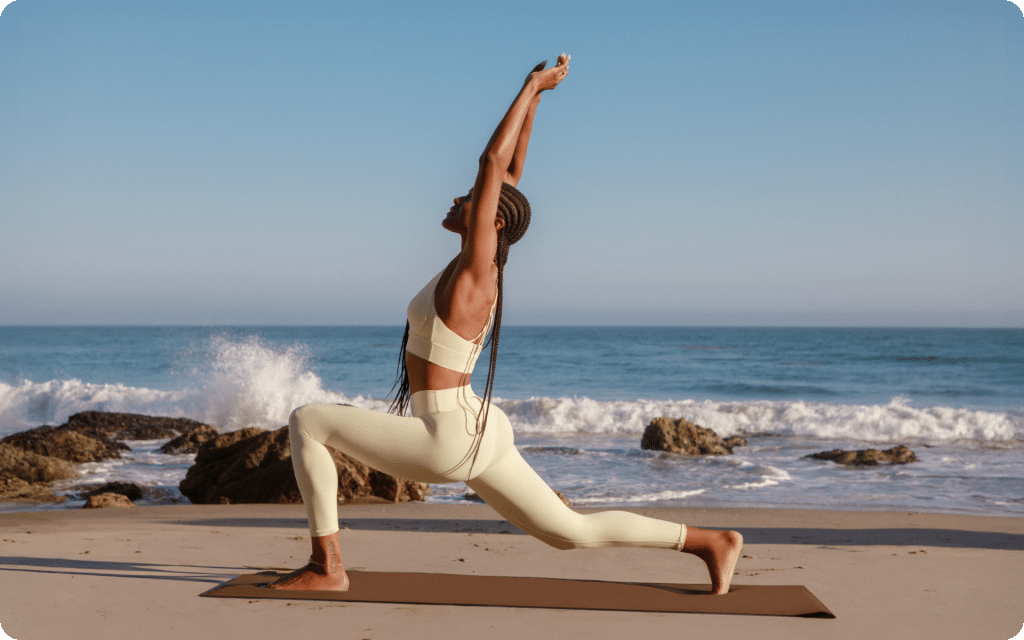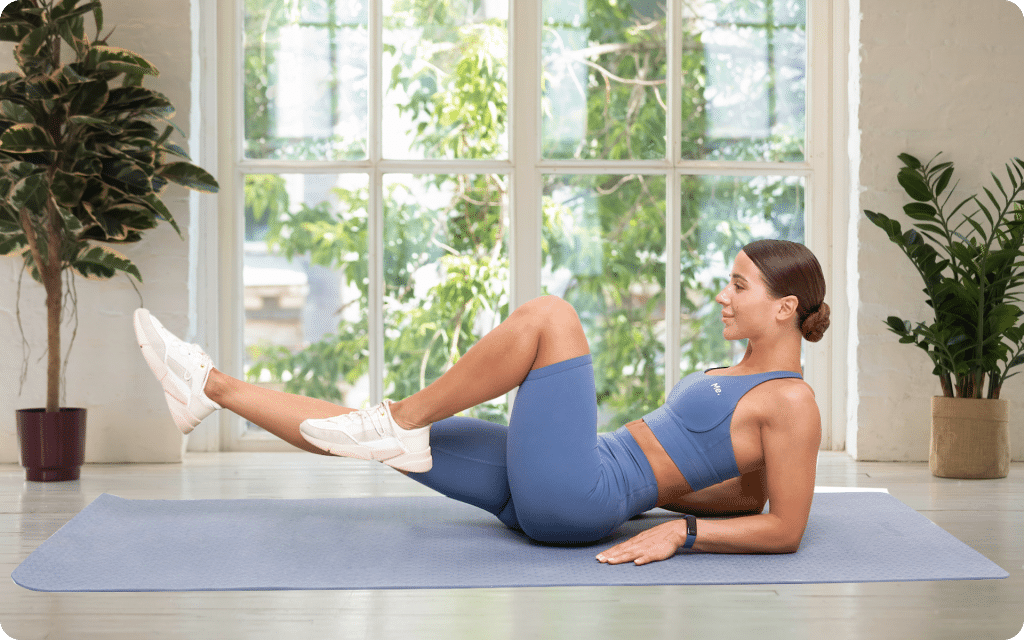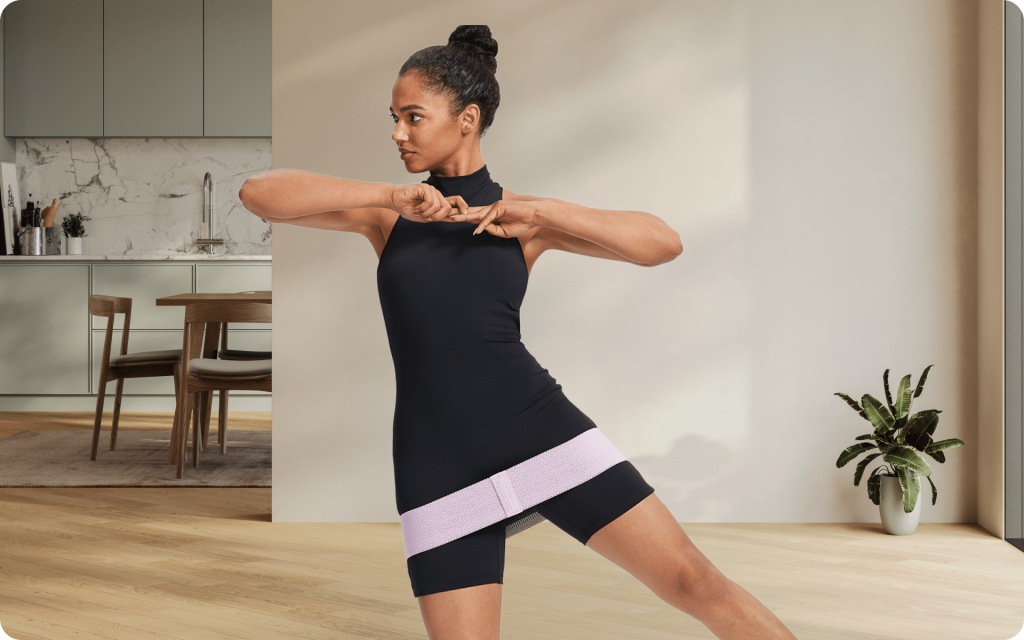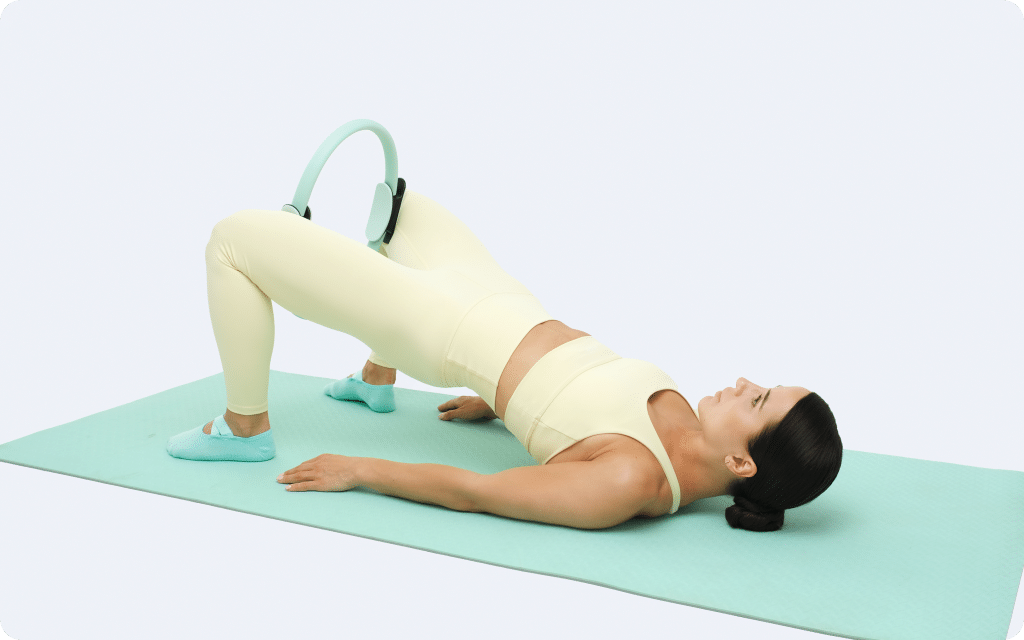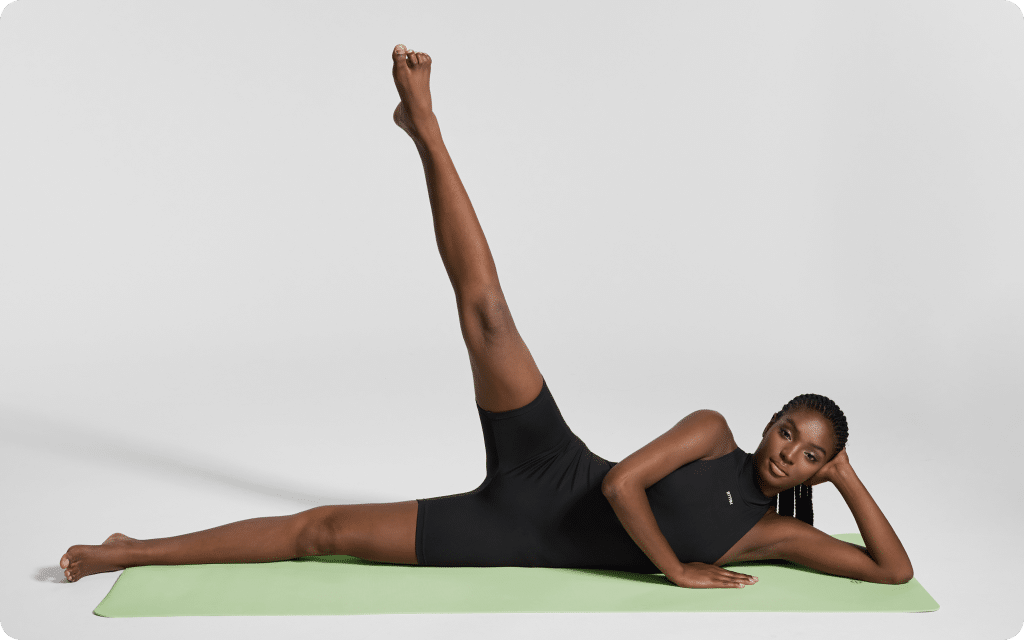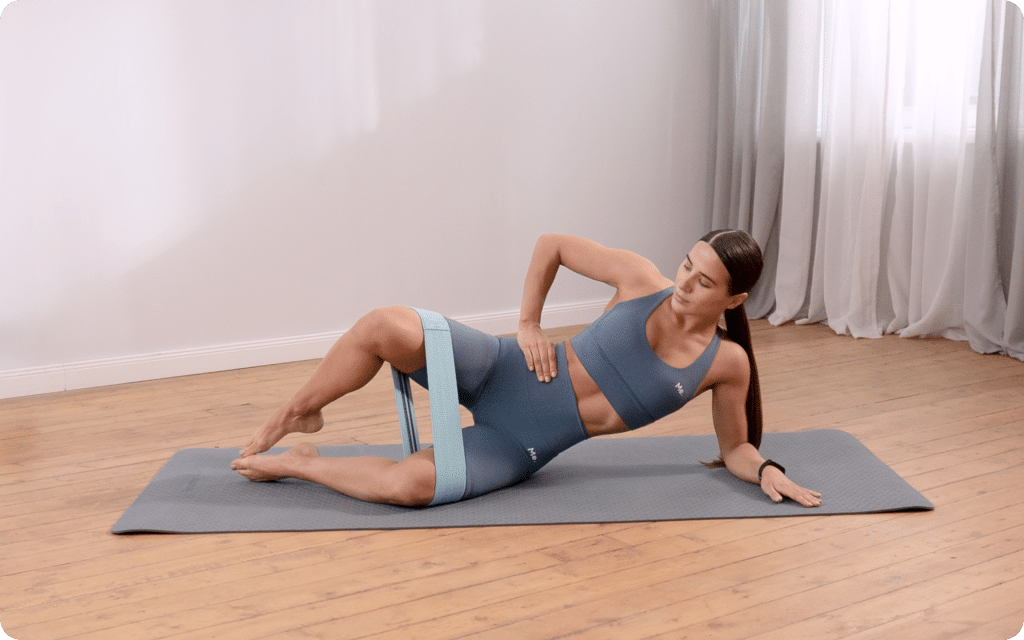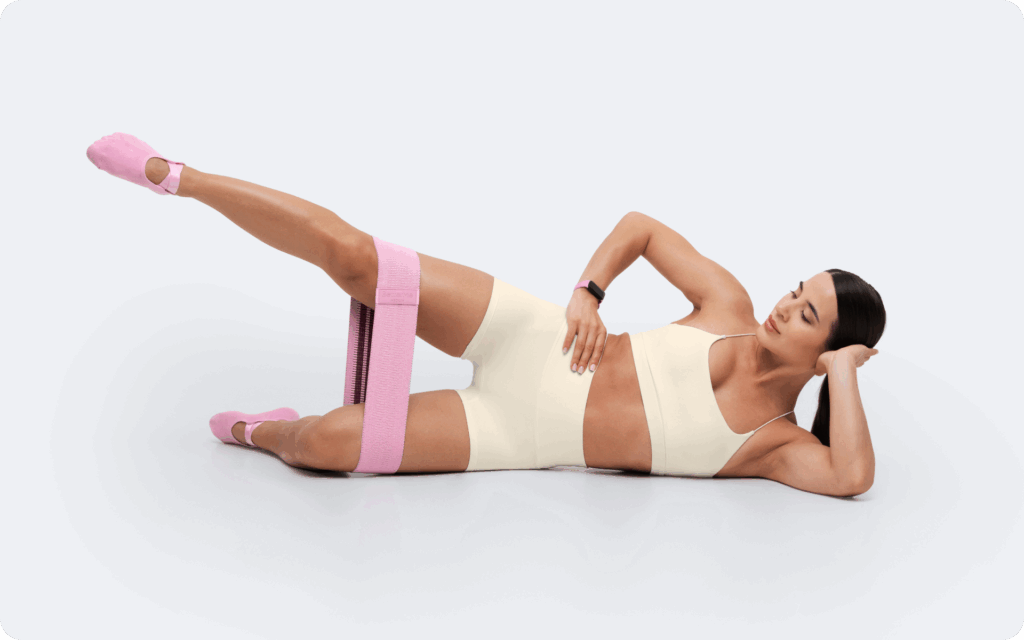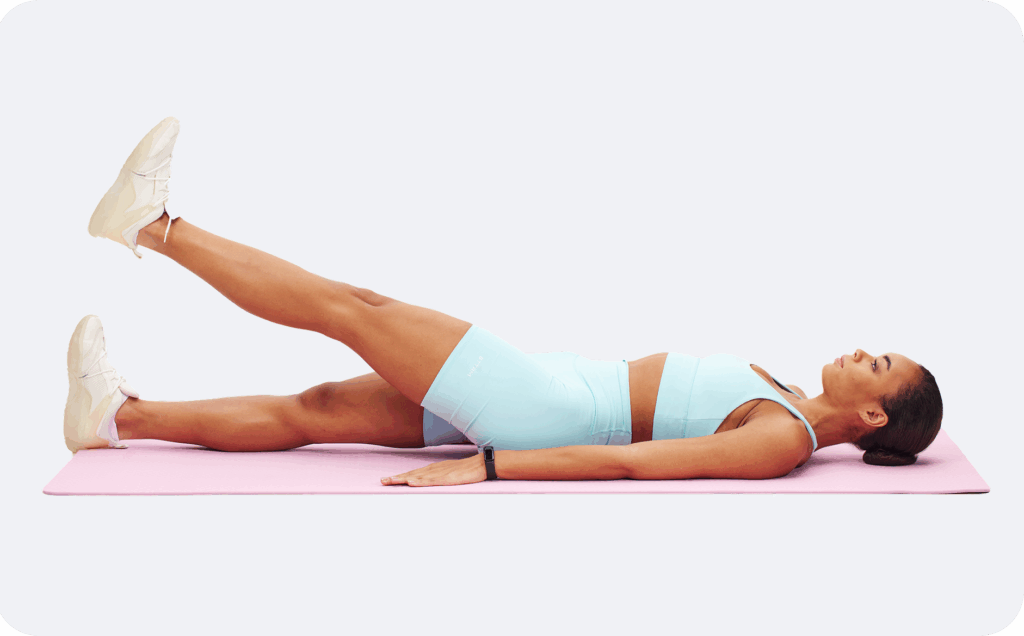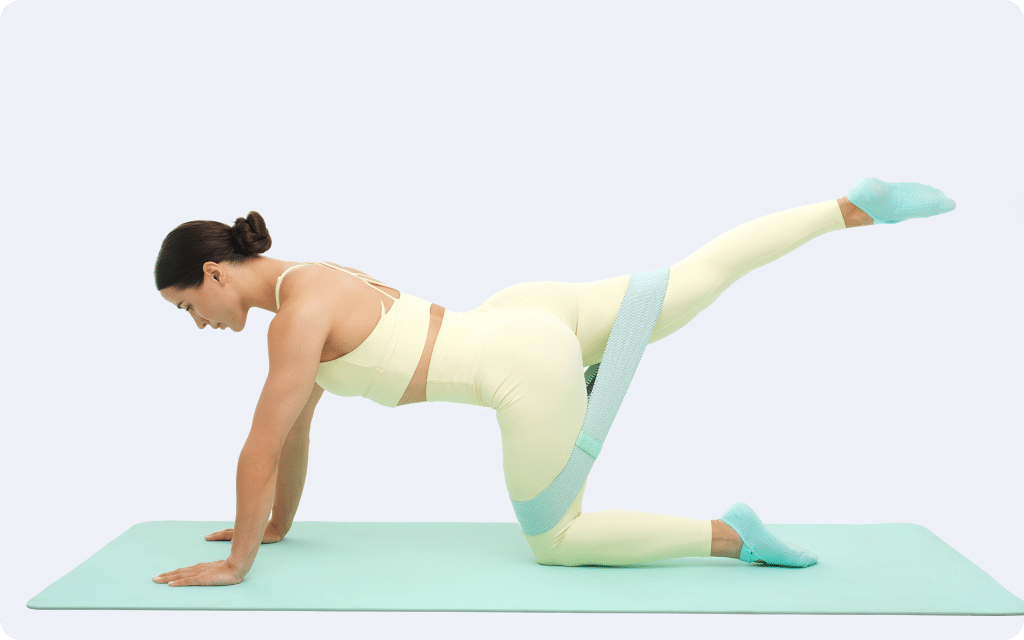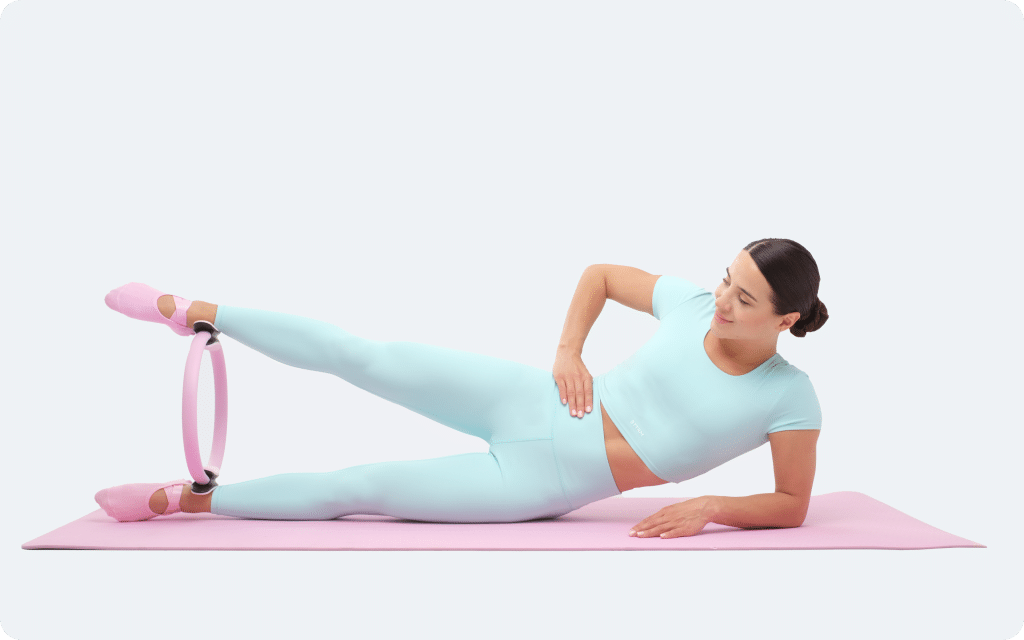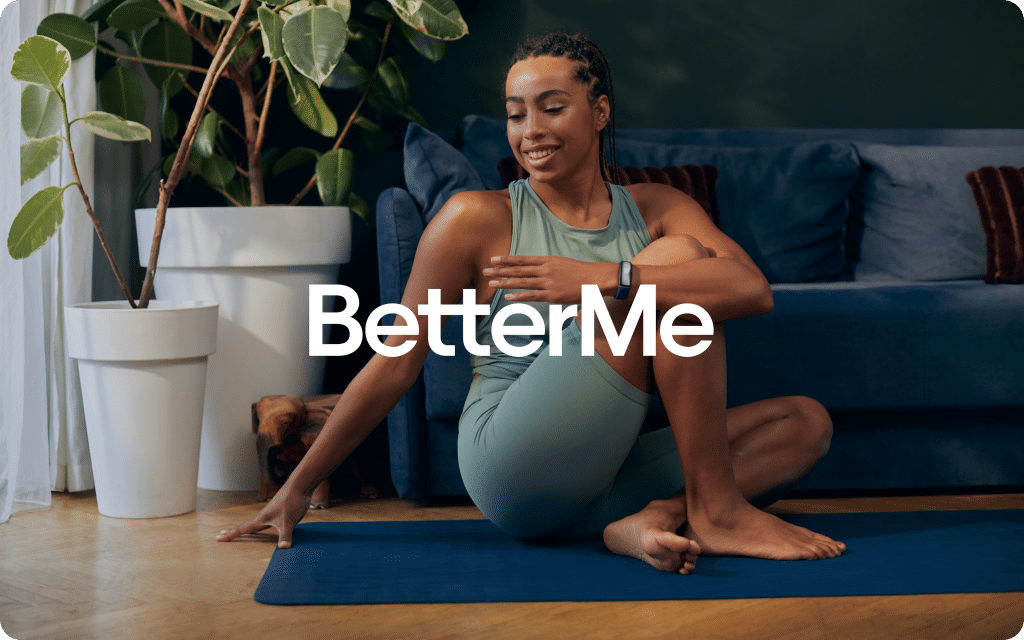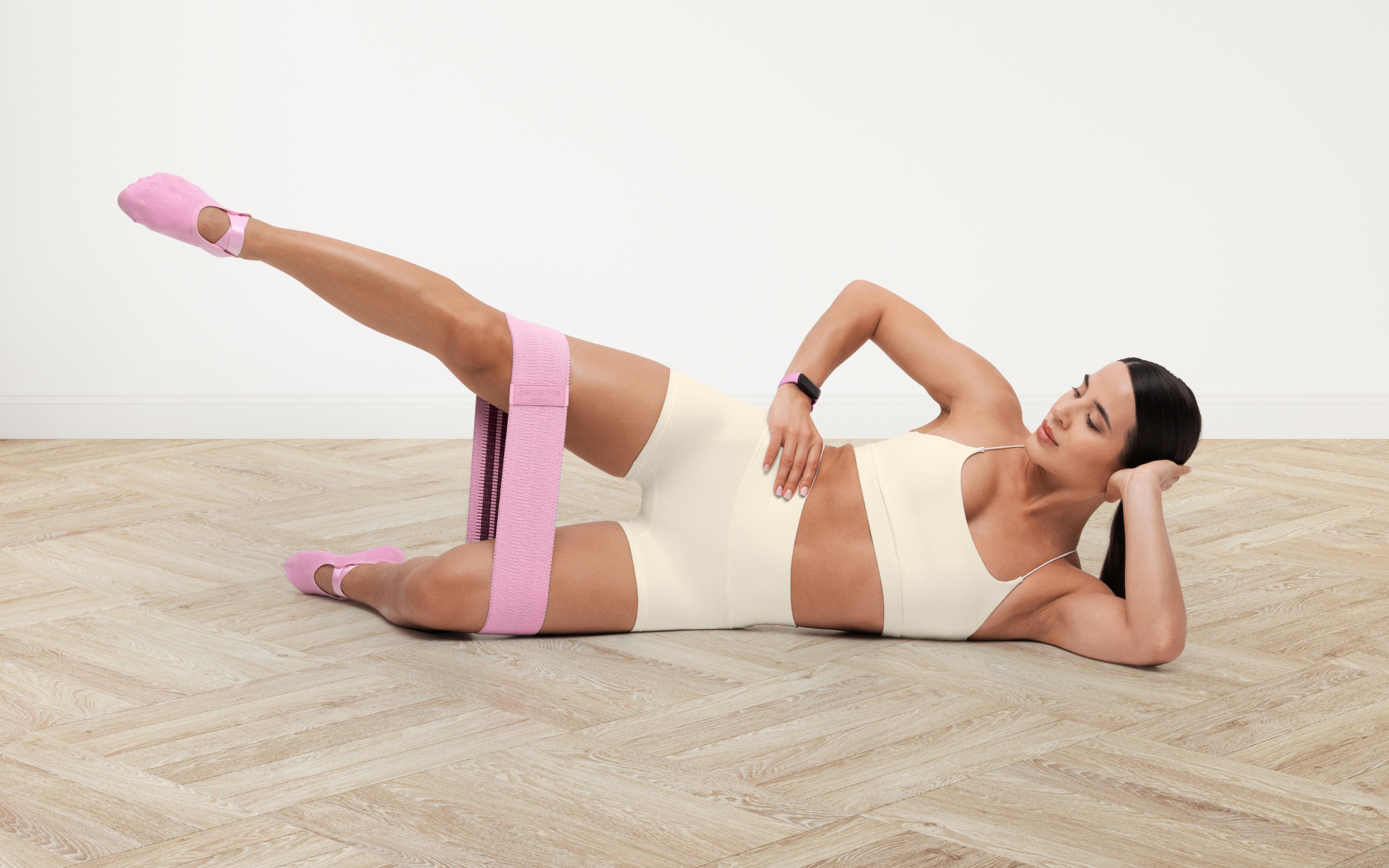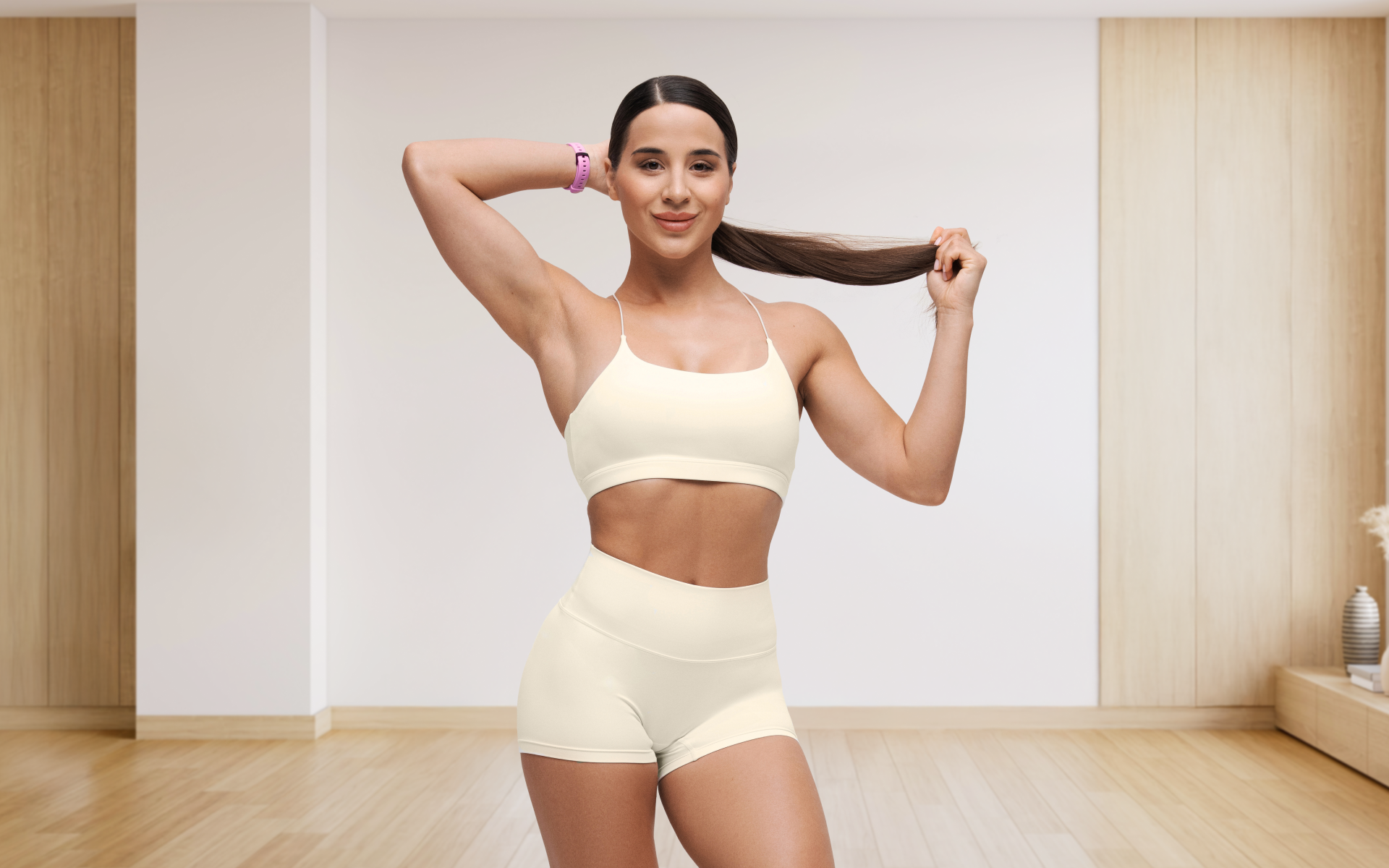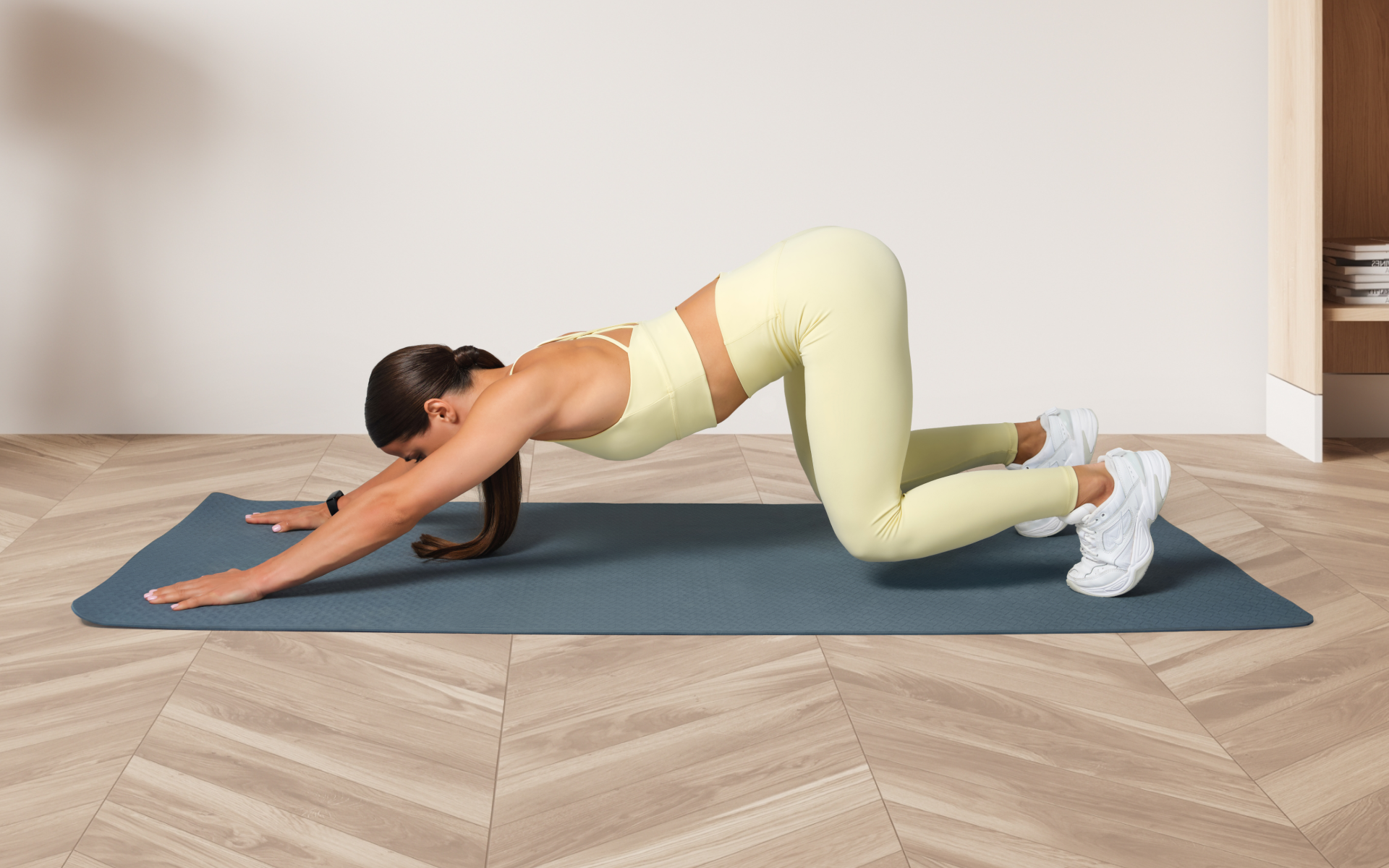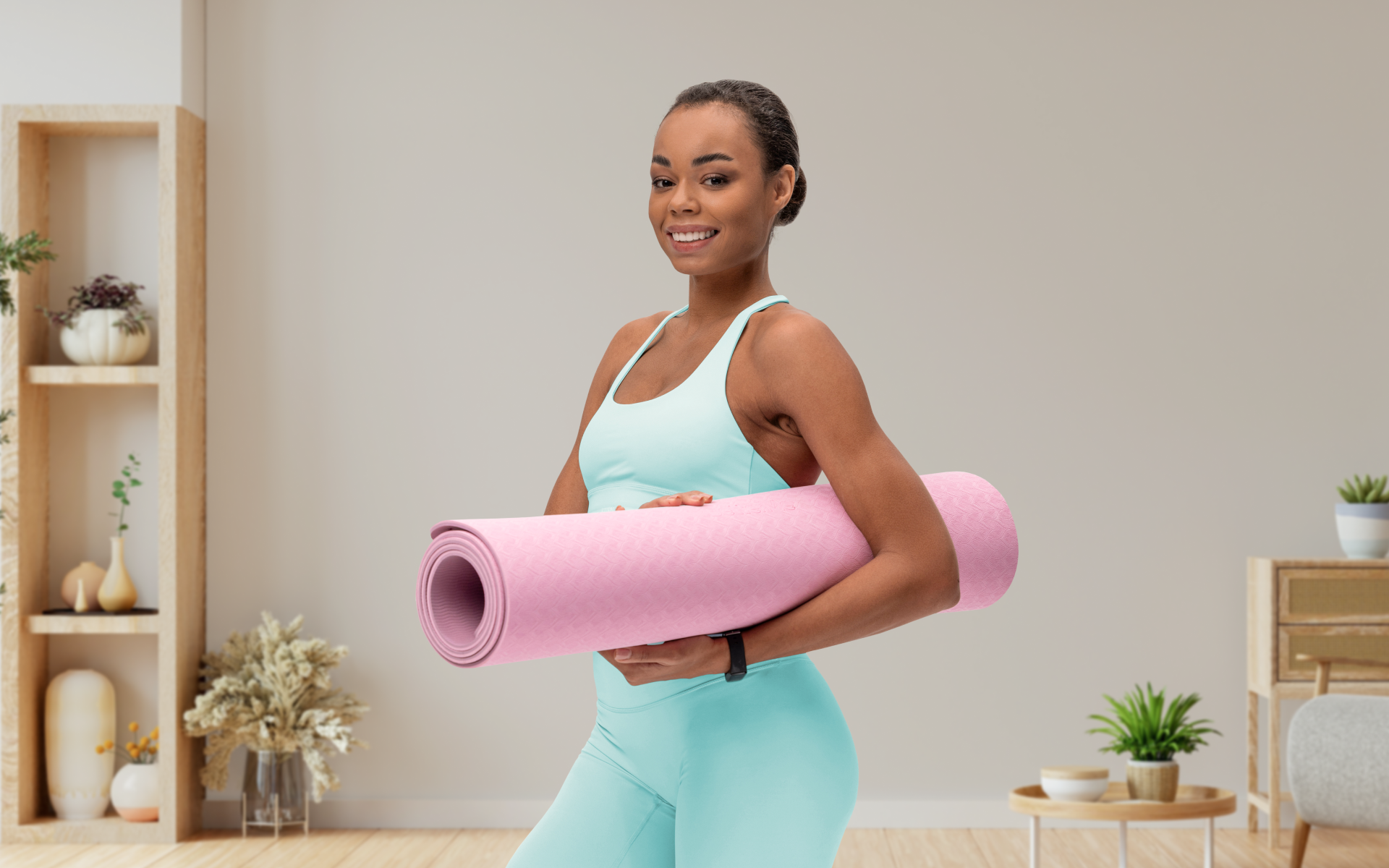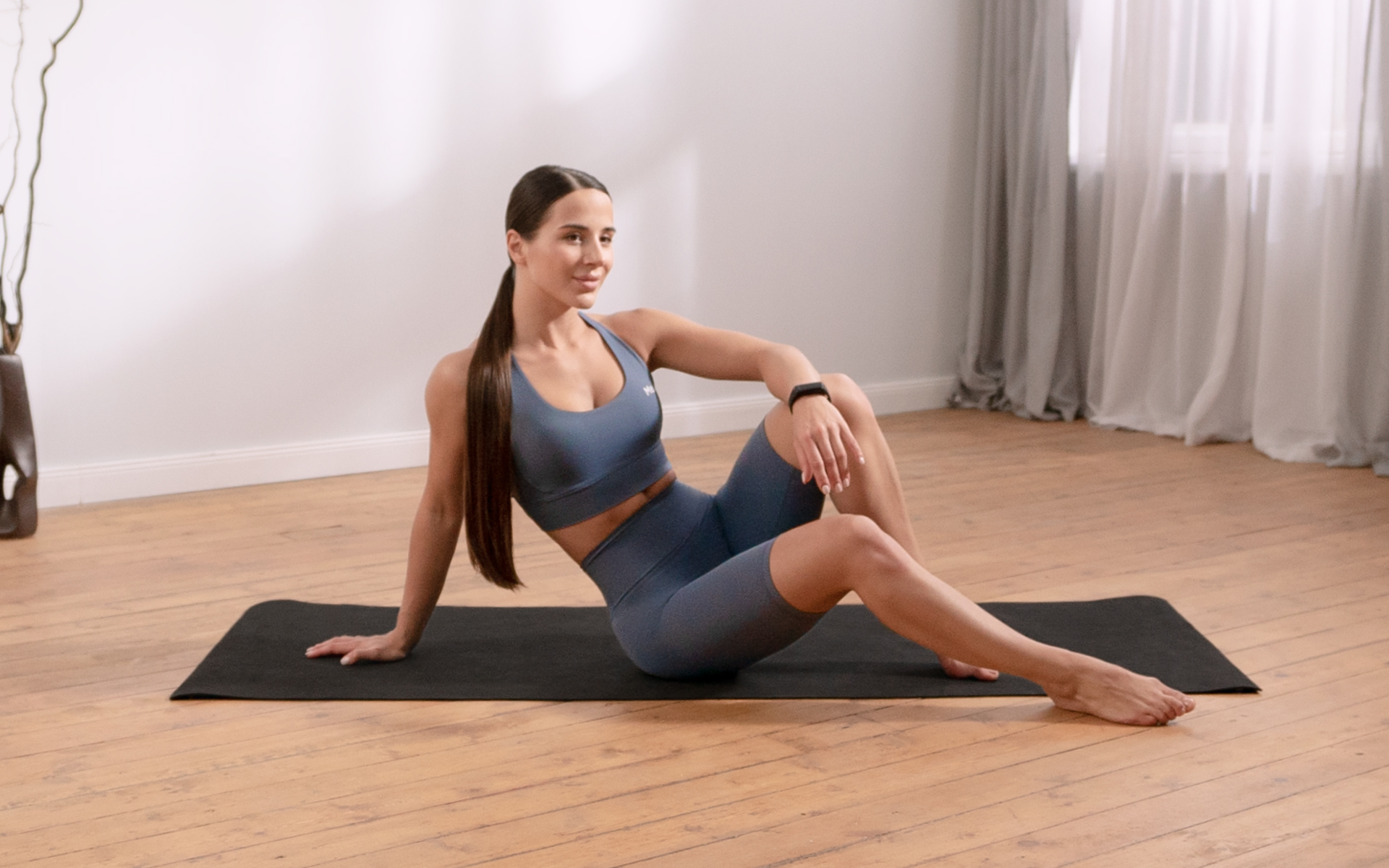Strong, balanced legs aren’t just about aesthetics. Your legs house some of the largest and most powerful muscles in the body, including the quadriceps (front thighs), hamstrings (back thighs), glutes (buttocks), and calves (1).
These muscles support daily movements such as walking and climbing stairs and are essential for athletic performance, stability, and overall mobility (1).
When strengthened, they also play a key role in improving posture, reducing injury risk, and boosting your metabolism as larger muscle groups burn more calories (2).
Pilates, often known for its focus on controlled movement and core strength, is an underrated tool for building powerful legs (3). The beauty of Pilates lies in its ability to train your muscles for both strength and flexibility through low-impact, precise exercises.
Here are 8 must-have Pilates exercises for stronger and leaner legs:
Does Pilates Work the Lower Body?
Pilates exercises are designed to engage multiple lower-body muscles, often at the same time. Here are some of the key players:
- Quadriceps (front of the thighs): These muscles extend your knee, playing a big role in movements such as squats or lunges, which are often mimicked in Pilates.
- Hamstrings (back of the thighs): These muscles bend your knees and assist in hip extension, both of which are common in Pilates moves such as bridging.
- Glutes (buttocks): These powerful muscles stabilize your pelvis and hips, offering support for moves such as single-leg exercises.
- Calves (lower legs): They handle push-off and balance as they work during Pilates exercises involving pointed toes or raised heels.
Each movement in Pilates is carefully designed to recruit these muscles while maintaining proper alignment and balance. This strengthens the target areas and activates supporting muscles that often get overlooked. If you’re curious about the best bodyweight leg workout, check out our earlier article.
How Pilates Builds Strength and Flexibility
The principles behind Pilates give it its unique strength-building potential:
- Controlled Movements: Each exercise emphasizes precise control, placing the focus squarely on the muscles being worked. This minimizes momentum and ensures your muscles remain active through the entire range of motion (4).
- Core Activation: Pilates always incorporates core engagement (5). A strong core supports the lower body, improving overall efficiency and stability during exercises (6).
- Muscle Isolation and Integration: Pilates isolates specific muscles and incorporates full kinetic chain movements. Movements such as leg circles work the hips while keeping the core stable, showing how muscles work together effectively (4).
- Eccentric Training: Pilates often emphasizes eccentric muscle contraction, where a muscle lengthens under tension (7). Think of slowly lowering your hip during a bridge. This type of movement can improve flexibility and strength at the same time.
Reasons why BetterMe is a safe bet: a wide range of calorie-blasting workouts, finger-licking recipes, 24/7 support, challenges that’ll keep you on your best game, and that just scratches the surface! Start using our app and watch the magic happen.
Can Pilates Change Leg Shape?
Pilates can have a moderate effect on leg shape by enhancing muscle tone and being part of a greater fat-reduction strategy.
First, Pilates primarily builds muscle tone rather than size. Muscle tone refers to the firmness of a muscle when it is at rest. Through controlled movements and resistance, Pilates activates and strengthens your leg muscles (3). This creates a leaner, more defined appearance.
However, if your goal is to significantly increase muscle size (also called hypertrophy), you need additional weight training. Pilates is more about achieving functional, balanced strength.
While Pilates may not directly reduce fat, it can help improve muscle definition underneath. A combination of regular Pilates, cardiovascular exercise, and a healthy diet can contribute to reducing overall body fat, which will enhance the appearance of your legs. For more details about Pilates for legs, take a look at our prior publication.
Does Pilates Make Your Calves Smaller?
Some people naturally have larger calves due to genetics. The size and shape of your calf muscles are influenced by your bone structure, muscle fiber type, and how your body stores fat. Pilates won’t alter these genetic factors, but it can improve muscle tone and flexibility for a more defined look.
Calf size may be influenced by the amount of fat that is stored in that area. Fat distribution is largely determined by genetics and can’t be targeted by specific exercises. While Pilates won’t directly burn fat in your calves, it can support overall fat loss as part of a balanced exercise routine. Reducing overall body fat may make your calves appear slimmer over time.
Read more: Can Pilates Build Glutes Just Like Weight Training?
Does Pilates Slim Your Hips?
Pilates can help your hips look leaner, but it doesn’t directly shrink them. Hip size is influenced by a combination of muscle, fat, and bone structure.
Pilates strengthens and tones the muscles that surround your hips, including the glutes, hip flexors, and outer thighs. Toned muscles can create a more sculpted appearance. However, Pilates exercises don’t promote significant muscle growth, so they won’t add bulk.
The way fat is distributed around your hips is largely determined by genetics. Pilates won’t target fat loss specifically in the hip area. Instead, it supports overall fat-burning when paired with a healthy diet and other forms of exercise, such as cardio. Lowering body fat levels can potentially reduce the size of your hips over time.
What Are Some Effective Lower-Body Pilates Exercises?
These Pilates mat exercises are great for strengthening and sculpting your glutes, thighs, and calves.
1. Bridge
Steps:
- Lie on your back with your knees bent and your feet flat, hip-width apart.
- Place your arms at your sides with your palms facing down.
- Engage your core and press through your heels to lift your hips off the mat.
- Form a straight line from your shoulders to your knees.
- Hold for 2-3 seconds, then lower your hips back down slowly.
- Repeat 10-12 times.
Tips:
Keep your core engaged and avoid arching your lower back. Squeeze your glutes at the top for maximum benefit.
2. Side-Lying Leg Lifts
Steps:
- Lie on your right side with your legs stacked and extended straight.
- Place your bottom arm under your head for support and your top hand on the mat in front of you.
- Point your toes and lift your top leg toward the ceiling. Avoid moving your hips.
- Lower the leg back down without letting it rest.
- Do 10-15 lifts, then switch sides.
Tips:
Focus on slow, controlled movements to engage the outer thighs and glutes.
3. Clam Shell
Steps:
- Lie on your side with your knees bent and stacked and your heels together.
- Rest your head on your bottom arm and place the top hand on your hip for balance.
- Keeping your heels together, lift your top knee as high as possible without moving your pelvis.
- Lower your knee back to the starting position.
- Perform 12-15 reps on each side.
Tips:
Keep your core engaged and avoid rolling backward. This targets the glutes and outer thighs.
4. Single Leg Circles
Steps:
- Lie on your back with your left leg bent, your foot flat on the mat, and your right leg extended straight up.
- Engage your core and draw small circles with your right leg, keeping it straight.
- Complete 5-8 circles in one direction, then reverse.
- Switch legs and repeat.
Tips:
Keep your hips and back stable throughout the movement. Your focus should be on controlled motion.
5. Pilates Side Kick
Steps:
- Lie on your right side with your body in a straight line.
- Prop yourself up on your bottom elbow, keeping your head aligned with your spine.
- Lift your top leg to hip height and kick it slightly forward.
- Swing it back past your body while keeping your core engaged.
- Perform 10-12 controlled kicks, then switch sides.
Tips:
Maintain stability in your torso as your leg moves and avoid arching your back.
6. Scissor Kicks
Steps:
- Lie on your back with your legs extended straight up toward the ceiling.
- Lift your head and shoulders slightly off the mat.
- Lower one leg toward the mat while keeping the other leg up.
- Switch legs in a scissor-like motion, maintaining control.
- Do 10-12 reps per leg.
Tips:
Engage your core to protect your lower back. Avoid letting your legs drop too low.
7. Heel Beats
Steps:
- Lie face-down with your legs extended and your forehead resting on your hands.
- Lift your legs slightly off the mat by engaging your glutes.
- Tap your heels together in a quick, controlled motion.
- Continue heel beats for 10-15 seconds, then rest and repeat.
Tips:
Keep your legs straight and focus on squeezing your glutes during the movement.
Whether you’re a workout beast or just a beginner making your first foray into the world of fitness and dieting – BetterMe has a lot to offer to both newbies and experts! Install the app and experience the versatility first-hand!
8. Leg Pull Front
Steps:
- Start in a high plank position, with your hands under your shoulders and your legs straight.
- Engage your core and lift one leg off the mat, keeping it straight.
- Hold for 2-3 seconds, then lower the leg and switch.
- Perform 8-10 reps on each leg.
Tips:
Ensure your hips stay level and your shoulders strong throughout the exercise.
Is It OK to Do a Lower-Body Workout Every Day?
No, training the same muscle group every single day isn’t a good idea. Here’s why.
Muscles grow and strengthen during rest, not during workouts. When you train, you create small tears in the muscle fibers. Recovery time allows your body to repair and rebuild those fibers stronger than before (8). If you skip rest, your muscles don’t get the chance to recover properly, which can lead to fatigue, weakness, and injury.
Overtraining happens when you work a muscle group too often or too intensely without enough rest. Here are the risks (9):
- Plateau in Progress: Without recovery, there’s no opportunity for muscle growth or strength development and your workouts become less effective.
- Injury: Overuse of the same muscles can lead to strains, sprains, or chronic injuries such as tendinitis.
- Fatigue and Burnout: Constantly pushing yourself leads to mental and physical exhaustion, which can make training feel harder and less enjoyable.
A well-designed exercise plan includes both training and rest. Here’s how to create balance:
- Alternate Muscle Groups: Work on different areas of your body throughout the week. For example, train your lower body one day and your upper body the next.
- Schedule Rest Days: Take at least 1-2 rest days per week to give your muscles time to heal. Remember that rest doesn’t mean inactivity. You can go for a walk or do light stretching.
- Focus on Variety: Switch between strength training, cardio, and flexibility exercises such as Pilates. This prevents overworking the same muscles and keeps your workouts exciting.
- Listen to Your Body: If you’re sore, tired, or feeling weak, scale back. Pushing through discomfort won’t bring better results and may lead to injury.
- Prioritize Recovery: Incorporate stretching, foam rolling, and hydration into your routine. Sleep well and fuel your body with nutritious food to support recovery.
Read more: Is 30 Minutes of Pilates a Day Enough?
How Long Does It Take to See Results from a Lower-Body Workout?
Seeing results from your lower body workouts takes time, and the timeline varies for everyone. Factors such as consistency, workout intensity, diet, and individual differences all play a role.
In the first 4 weeks, depending on your level of fitness, you may start to feel stronger and notice a slight increase in muscle definition (10). However, significant changes in size and strength typically take 8-12 weeks (11). Our previous post goes into great detail about the standing Pilates exercises.
It’s important to remember that results continue to improve with consistent effort over time. Don’t be discouraged if you don’t see immediate changes. Keep pushing yourself and remain dedicated to your workouts.
Pilates and gym workouts serve different purposes. Pilates is focused on core strength, flexibility, and body awareness, while the gym often emphasizes building muscle and cardiovascular fitness. Which option is better will depend on your personal goals. Dive deeper into Pilates body vs. gym body with our dedicated article. Pilates can help strengthen and tone your abdominal muscles, but it doesn’t specifically target belly fat. Fat loss requires a combination of Pilates, cardiovascular exercise, and a calorie-controlled diet. Pilates can improve muscle tone and posture, which may give your legs a leaner appearance. However, slimming the legs also involves reducing overall body fat through a combination of exercise and proper nutrition. No, noticeable changes to your thighs in just 10 days are unrealistic. It takes consistent effort over several weeks or months, combining exercise, healthy eating, and rest before you see visible results.Frequently Asked Questions
Is Pilates better than the gym?
Does Pilates burn belly fat?
Can Pilates slim your legs?
Can I get slim thighs in 10 days?
The Bottom Line
Lower-body Pilates exercises are a gentle way to strengthen your glutes, thighs, and calves while improving your flexibility and posture. These mat-based movements are low-impact but highly effective, which makes them suitable for people of all fitness levels. By consistently incorporating them into your routine, you’ll build a stronger, more toned lower body over time.
DISCLAIMER:
This article is intended for general informational purposes only and does not serve to address individual circumstances. It is not a substitute for professional advice or help and should not be relied on for making any kind of decision-making. Any action taken as a direct or indirect result of the information in this article is entirely at your own risk and is your sole responsibility.
BetterMe, its content staff, and its medical advisors accept no responsibility for inaccuracies, errors, misstatements, inconsistencies, or omissions and specifically disclaim any liability, loss or risk, personal, professional or otherwise, which may be incurred as a consequence, directly or indirectly, of the use and/or application of any content.
You should always seek the advice of your physician or other qualified health provider with any questions you may have regarding a medical condition or your specific situation. Never disregard professional medical advice or delay seeking it because of BetterMe content. If you suspect or think you may have a medical emergency, call your doctor.
SOURCES:
- Leg Muscles (2021, my.clevelandclinic.org)
- What Are the Benefits of Leg Workout? (n.d., medicinenet.com)
- Effect of Pilates on Lower Limb Strength, dynamic balance, agility and coordination skills in aspiring state level badminton players (2023, researchgate.net)
- Effects of a Pilates exercise program on muscle strength, postural control and body composition: results from a pilot study in a group of post-menopausal women (2015, pmc.ncbi.nlm.nih.gov)
- The Relationship of Trunk Muscle Activation and Core Stability: A Biomechanical Analysis of Pilates-Based Stabilization Exercise (2021, mdpi.com)
- The real-world benefits of strengthening your core (2012, health.harvard.edu)
- Pilates Power of the Eccentric Contraction (2018, pilatesequilibrium.com)
- Effects of Consecutive Versus Non-consecutive Days of Resistance Training on Strength, Body Composition, and Red Blood Cells (2018, frontiersin.org)
- Overtraining Syndrome as a Complex Systems Phenomenon (2022, frontiersin.org)
- The increase in muscle force after 4 weeks of strength training is mediated by adaptations in motor unit recruitment and rate coding (2019, pubmed.ncbi.nlm.nih.gov)
- Changes in Body Composition and Strength after 12 Weeks of High-Intensity Functional Training with Two Different Loads in Physically Active Men and Women: A Randomized Controlled Study (2019, pubmed.ncbi.nlm.nih.gov)
